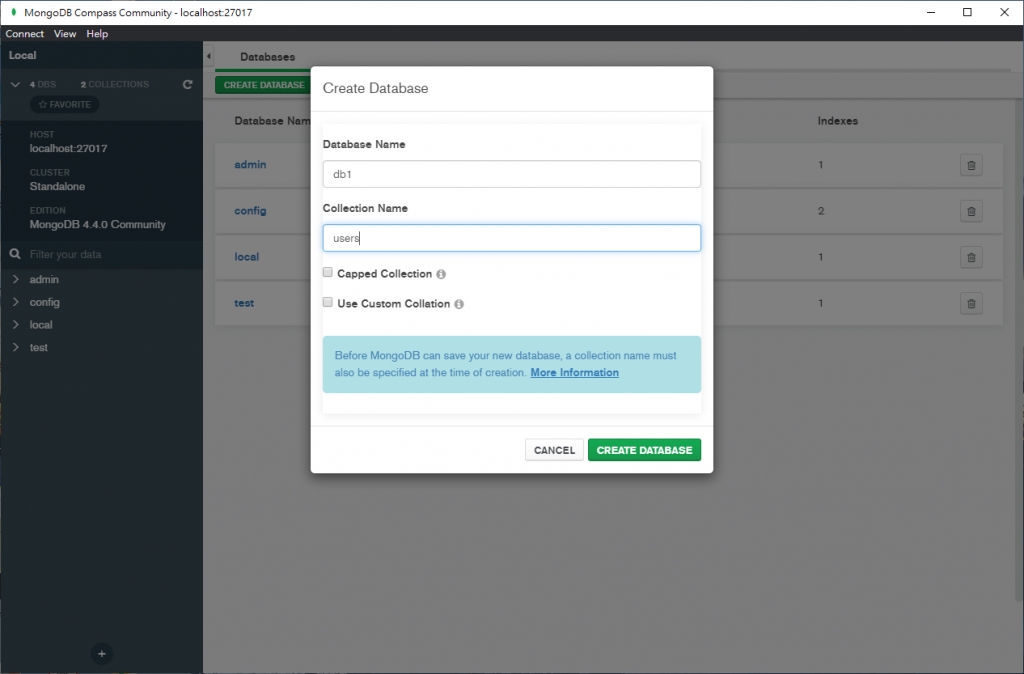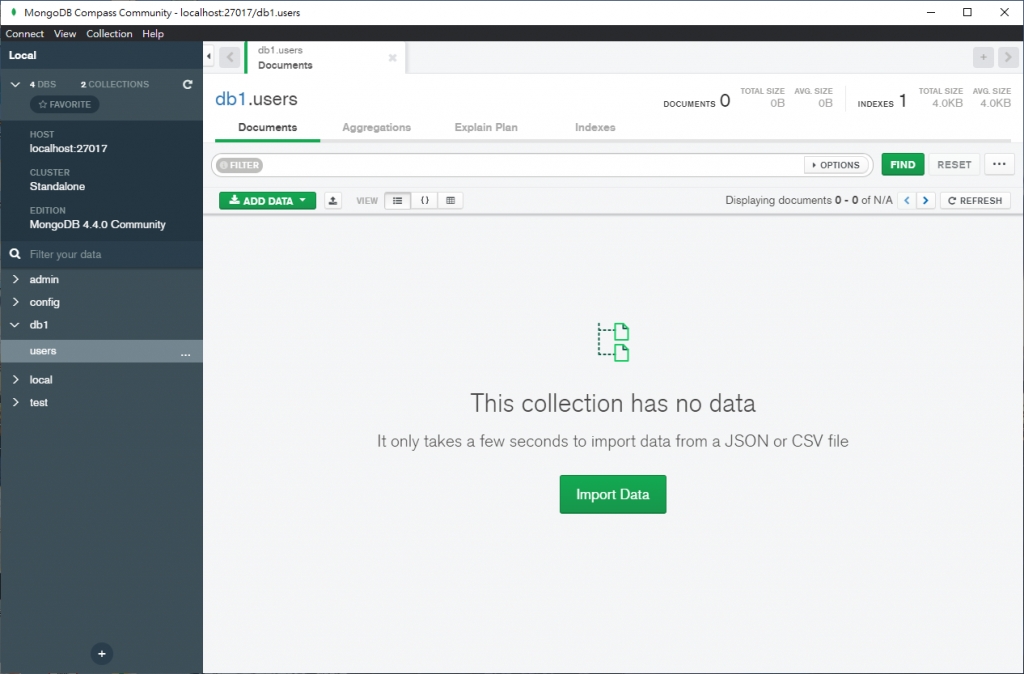Deno 與 MongoDB 共舞
開始之前: 設定 collection 以及 database
繼昨天的安裝教學,我們現在來建立待會要使用的 database 以及 collection :
打開 MongoDB Compass 並按下
Create Database。

輸入 Database 和 Collection 的名字:

創建完成,如果讀者有需要,也可以先插幾筆資料進去。

進入正題: deno_mongo 教學
deno_mongo 是一款 MongoDB 資料庫驅動的 Deno 第三方套件,它是基於 rust 官方的 mongoldb Library 所打造的。
建立連線
在開始之前,需要將第三方模組引入:
引入後,將 MongoClient 物件實例化:
開啟 MongoDB 後,就可以使用 client 建立連線:
執行到這一步時,就已經成功連上 MongoDB 了,不過我們還沒告訴 Deno 要存取資料庫中的哪一個 database 和 collection :
上面的範例是讓 Deno 連上 MongoDB 中 test database 的 users collection 。
使用 Interface 防止非預期資料寫入 MongoDB
使用 Interface 可以有效預防有心人士在 json 格式內插入不需要的資料。
假設我們預期 collection 的欄位只有 id 、 username 以及 password ,可以先定義好 interface :
定義好後,我們在連結 collection 的那行程式碼加入 interface 檢查:
常見操作
在學會如何與 MongoDB 建立連線後,跟著筆者一起看看 deno_mongo 提供的操作方法吧!
注意!進行以下常見操作都需要先將 Deno 與 MongoDB 做連接唷!
新增單筆資料
新增多筆資料
尋找單筆資料
尋找多筆資料
計數
計算 Collection 中有多少筆資料包含使用者輸入的鍵值對 :
聚合
聚合操作主要用於處理數據 (像是:取平均值、加總等操作)並回傳計算後的結果。
新增單筆資料
新增多筆資料
刪除單筆資料
刪除多筆資料
跳過
我們可以使用 skip() 跳過指定數量的資料:
限制
如果使用者需要在 MongoDB 中找尋數據並指定數據記錄的數量,可以使用 limit() :
執行
最後要注意的是, deno_mongo 目前還不穩定,使用上不要忘記加入 --unstable 標籤唷!
總結
本篇文章提到了如何使用第三方套件去連線 MongoDB 。明天筆者就會將簡易 WebAPI 留下的坑填完,順便分享一下什麼是 ORM ,我們明天見!
此外,本篇所使用的範例程式碼參考了 deno_mongo 的官方文件,請知悉。
Last updated
Was this helpful?